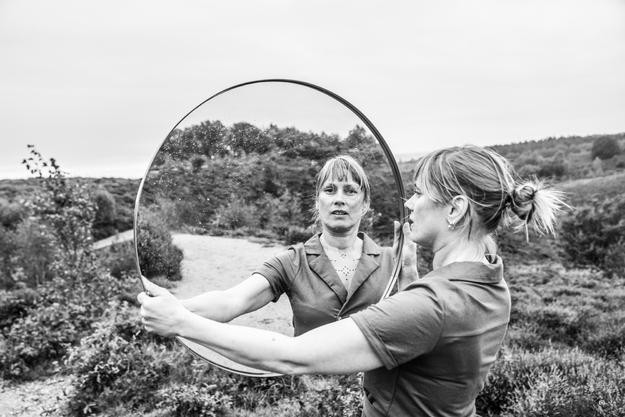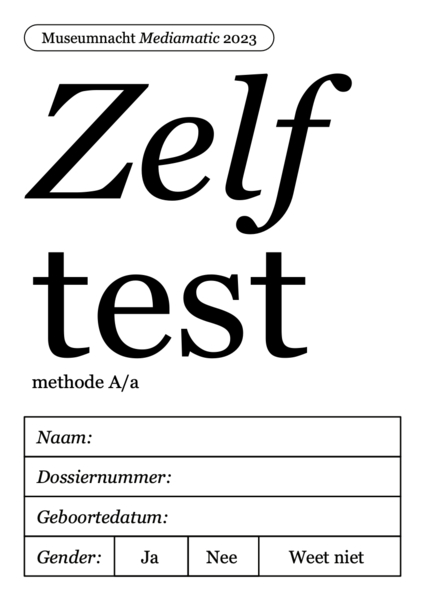Q: Could you tell us a bit about yourself and your journey as an artist and a writer so far?
A: Where to start? Well, I first studied psychology. And then I thought, this is too boring, because I only get to reproduce other people's thoughts. I wanted to make things. But I've always been very interested in what people do. Why do people do what they do? I decided to go to art school. After graduating, I was an artist, and then what do you do? So, I went to ARTEZ in Arnhem to also become a teacher. I began teaching art for 10-15 years, but God that was a bit of a hassle. Every few years, I would sort of collapse and crash, and then I’d always start doing art again, because the work was too exhausting to keep that practice alive. But you need to make a living, so I went back to working a real job, a “regular job”, and then I didn’t have time anymore to make art. I kept thinking something was wrong. Then, I was diagnosed with autism and suddenly, all the bits and pieces fell into place. I finally understood, what I didn’t understand. And I revived my artistic practice. Without letting go this time, because it is a way of keeping myself sane.
Why Rejection is Good for You - By Jam van der Aa for A/artist Meeting of 19 February 2024
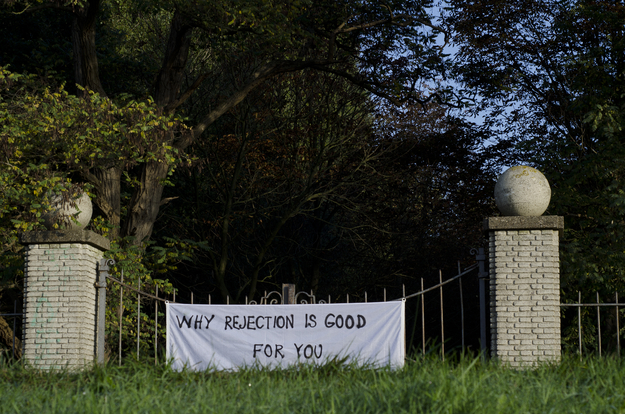
Q: What did that artistic practice come to look like?
A: When I graduated from art school, I made a book with photographs and texts (The Experiments). The teacher said they couldn’t afford to validate my texts, because they didn't know anything about texts at all. And that made me very insecure. Nowadays, you can study image and text and creative writing, but in those days, you couldn’t. For me, working with language is important. So, I think that’s why primarily I'm shifting more towards text. I am just better working with text. For me to shift into artistic research, well let’s just say, out of autism it sort of feels natural. Life is research to begin with.Two weeks ago, I finished the new version of my manuscript and sent it to my agents. It’s a world I created to live in, like a shelter from daily life.
Q: Congratulations!
Q: To go back in time a little bit, you were very involved with Mediamatic’s Museumnacht concept last year, and designed the Zelf Test framework and transformational ragdoll workshop. Could you tell us a bit about how that process was for you, and how it reflects some of your artistic research?
A: The process was nice! At times, it was also difficult because it was a project which involved many people and many opinions. I’m really used to being alone, and working on whatever I want to do. I am someone that needs a lot of time, to overthink and to understand. So, it was navigating different wants and needs, but then what we created together was really nice– what we were able to make as a team.
As time has passed, I look back at the Zelf Test and see that it really does reflect the way I work (I do pose a lot of questions all the time) and maybe the way I function. I do not believe that people are fixed beings. I mean, everybody is dynamic! So, the person you are tomorrow is not the person you were today. Maybe that is personal, but I think the only way to cope is to question everything you see. You come up with answers, and then you can make other steps. And then you must question everything again.
As for the transformational ragdoll workshop, it is about accepting that we do transform, and we are developing all the time. It’s important to develop from a place where you accept yourself and where you are now. We all have habits that we would want to change, but sometimes the question is, do we really need to change it? Or do we need to change our ideas about ourselves? When I found out I am autistic, there was this realization that there is no fixing it. Then the question becomes, why do we need to be fixed?
A few weeks ago, there was a female comedian who went on the national broadcasting system, and she was saying how we have so many coaches, but maybe all these coaches are trying to fix us just so that we can fit in a rotten system. The workshop asks you to question, how do we treat ourselves? Why do we feel we need to fix certain parts? How can we be more accepting, and transform this relationship to ourselves?
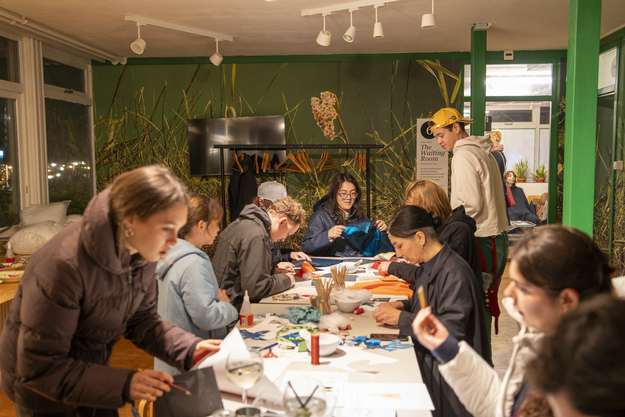
Q: Thank you for sharing that! How would you describe your relationship to the art world, and how do you feel it connects to your neurodivergent experience?
Lately I’ve been thinking about how I am not only an autistic person, but also the product of my upbringing. For me, it's often difficult to separate them. We should not see autism as an illness, or something that needs to be fixed.
In the art world, weirdness flourishes. We really do like the weirdness of artists. But on the other hand, you also have this pressure and urge to fit in. Where exactly? For a long time, I found it way too hard to understand the unwritten rules, when it is okay to be weird, when it is not okay, when you must present yourself as normal, and when to fit in.
The art world can be a very unsafe place, and you need a lot of luck. When you have difficulties coping in the world, the art world can present even greater challenges. All the unwritten rules that apply in normal life, some apply more in the art world, and others less. For example, to apply for residencies, you cannot rely on your weirdness as an artist. You have to be able to perform ‘normal’, to submit forms, to know what to say, like in a job interview or presentation.
For me, it helps that I do understand my conditions better. That I know now who I am and what I want. Partly, I worked in education for 15 years, because I did not know how to relate to the art world. It is a very abstract idea in a way. The Art World. But I think life is short and we only have one life, so I guess this is the time. I understand that I do need my special interests or fascinations to function. Is it art? The whole world can say it is a hobby. You're not going to earn (enough) money with it. But I am going to do it anyway. I must. From that point, I can start to find my way within this art world. Within the world really.
Q: On February 19th, you will be presenting at our upcoming A/artist event titled ‘Happiness is Golden’. Which aspects of your research into art and autism can people be excited to hear more about?
A: I think my emphasis is on the idea that autism is not something we need to fix. We do not need a cure. There is scientific research that suggests that autism is a condition, occurring in much more individuals than we thought before. I want to investigate that a bit more and understand how brains work. Maybe this sounds boring, but it isn't! How do brains work? Fantastically! This brain is capable of things that are cool. However, we need to facilitate these brains in a different manner. And then, we have this golden stuff to work with. But the key thing is that I am searching for a way to help people understand that it's not a negative thing. At all.
I will be sharing films, artists, writers, and various research that people are doing. I find it interesting that more and more autistic artists and writers are coming together. Perhaps it's not always activism, but they aim to normalize the condition. I'm not entirely sure why but I tend to focus more on female artists, who also seem to employ more interdisciplinary approaches.
So yes. My goal is to move away from the notion of 'syndrome.' Instead, I aim to foster a discussion where we can collectively explore the idea and delve into it together.
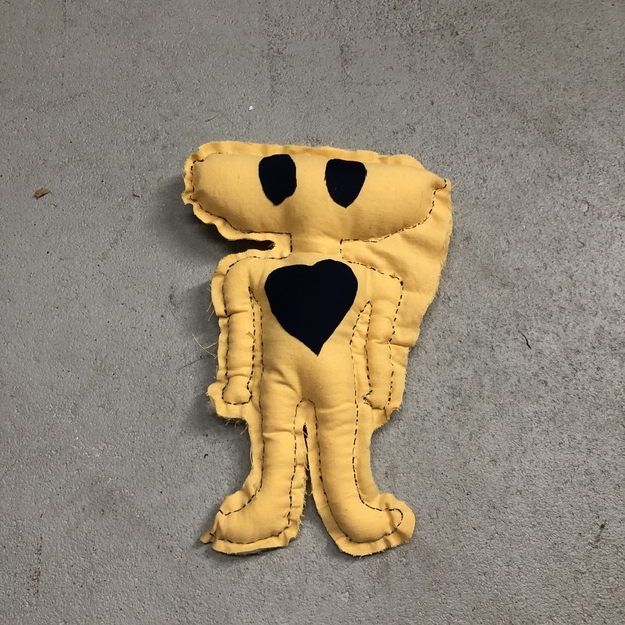
Q: You also completed a teacher training course at ARTEZ in Arnhem. What insights do you feel that you now have into the experiences of neurodivergent students in art education and what the system needs to change?
A: Yes! The most important thing is clarity. I strongly believe that autistic individuals have a brain that has a very detailed way of dealing with the world. For instance, when I was studying at the Hogeschool in Nijmegen and had to write a paper, I encountered a situation where the criteria for the paper were scattered across three different locations in the digital learning environment. However, each document presented different criteria, leaving me confused about what to do. When I brought this to the teacher's attention, I had to convince the teacher of this fact first, to then make the teacher decide with one of the three lists of criteria was the correct one. A total waste of energy.
When the question is solely about art education, then I really would have liked to learn that a special interest is a lifeline for people.That the immense urge to make art is not a myth. Schools must prepare students with a realistic view on live. How are you going to cope as an artist? Of as a person with very strong fascinations? Let's imagine a star moving through the universe, and then education comes along and disrupts its path, knocking it off course. The star then must find its way back. We need to look at what each person needs.
Personally, I find it hard to know how to do things sometimes. While some people may find tasks straightforward, I often have trouble knowing what to do. This is true for basic things, like establishing routines, which can be tough for people with autism or ADHD. Many of us don't know how to start tasks or create routines like others do. So, education should think about not just what tasks need to be done, but also how to approach these tasks and how to organize things. This might seem basic, but it's important, especially for those facing challenges.
Q: Lastly, do you have any advice from your own academic journey for neurodivergent students currently navigating these spaces of their own?
A:I believe the most crucial thing for everybody is to ensure they have a good place to come home to. However, I think this is especially crucial for members of the neurodivergent community, even more so than for others. It's important to have a place to return to and be yourself again. I felt scattered and lacked a sense of belonging. Nowadays, waiting lists for housing are massive. So even the most literal idea of being at home is under pressure. If you can't find this home or safe place within a group of family or friends, it becomes a real problem. In the art world, it would be beneficial to have a platform for people to turn to. You must find a way to create a safe space and safeguard your happiness. I often consider myself fortunate for the time I studied when things were more relaxed. Nowadays, the pressure is intense.
Safe spaces are necessary. I get that for many people, finding such a place is a privilege, which unfortunately not everyone has. I hope educational institutions pay more attention to this, and work on creating a healthy environment for all their students.
To hear more of Jam’s insight and her artistic research, you are welcome to join us at our next A/artist event: Happiness is Golden, at Mediamatic on 19th February 2024.
